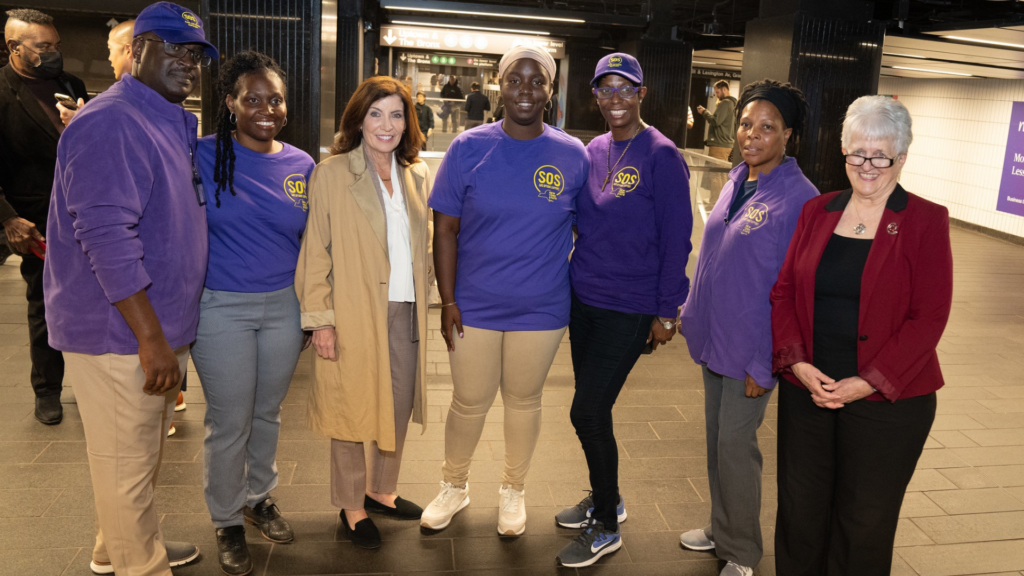Opinion: The Next Mayor’s Real Test? Ending New York’s Homelessness Crisis
October 16, 2025
City Limits
Op-ed by Perry Perlmutter, S:US President & CEO
New York’s most powerful and influential business leaders are eager to get their priorities heard by the new mayor, whoever he may be. Real estate executives and Wall Street partners have met with Zohran Mamdani and stumped for Andrew Cuomo. Our next mayor will have no illusions about the issues facing the city’s elite and that elite’s proposed solutions.
What is more urgent, though, is what the next mayor will do for the thousands of homeless New Yorkers who share the city with those business leaders.
The numbers tell a stark story. New York’s homeless population is increasing at an alarming rate. In calendar year 2024, the number of New Yorkers in shelters—excluding new arrivals—increased by roughly 12 percent to more than 73,000. The fundamental issue driving that increase is a lack of housing. The vacancy rate for apartments sits at a historically low 1.4 percent. This past June, rent prices surged 7 percent year-over-year, marking the seventh consecutive month of rising housing costs.
As someone whose organization works across both ends of this problem—directly with New York City’s homeless population and helping develop new supportive and affordable housing to increase supply—I’ve seen firsthand what city government is capable of accomplishing when it moves with purpose and urgency. But to do that, the next mayor will need to address three bureaucratic bottlenecks to help move people from the streets to stable housing.
First, we must dramatically accelerate the creation of new housing. The incoming mayor should launch an executive-led initiative to fast-track affordable housing approvals within the first 100 days. This means directing city agencies to expedite environmental reviews and waive certain fees for 100 percent affordable and supportive housing projects. Removing red tape and adopting “by-right” zoning for affordable housing can significantly accelerate New York’s housing pipeline.
The mayor should also empower a deputy mayor for housing and homelessness within City Hall—a leader authorized to take a big-picture view of what’s driving our homelessness crisis and implement a city-wide plan to build new housing, particularly affordable and workforce housing.
Additionally, we need an immediate initiative to rapidly convert underutilized office buildings into residential units citywide. This goes beyond existing state-level tax incentives to dramatically increase housing stock where it’s needed most.
Getting people off the streets and into shelter is the crucial second pipeline. This means expanding our existing street and subway outreach teams while building on current relationship-based approaches, like the successful Safe Options Support (SOS) program. We must take down barriers to shelter intake processes that currently leave people cycling between the streets and dead ends. Better coordination between outreach teams and the shelter system will enable faster and more effective intakes, ensuring that when someone is ready to come inside, we’re ready for them.

S:US’ SOS Team Richard Byamugisha, Charisse White, Jemima Babb, Crystal McClelland, and Sandrine Clarke with Governor Hochul and NYS Office of Mental Health Commissioner Dr. Ann Sullivan. Photo credit: NYS Governor’s Office.
And finally, we need to move folks from shelter to permanent housing faster. It takes far too long for shelter residents to secure permanent housing, and the new administration must attack this bottleneck head-on.
The mayor can mandate a top-to-bottom review of the approval process for supportive housing and CityFHEPS housing vouchers, with clear instructions to eliminate unnecessary steps. In practice, this means reducing paperwork burdens, streamlining eligibility interviews, and pre-qualifying shelter clients for housing subsidies much faster. The city has already made recent improvements, allowing more flexible documentation and expanded voucher access—we need to build on that momentum aggressively.
Long-term, the city should invest in substantially more housing vouchers and incentivize landlords through signing bonuses or tax breaks to accept homeless tenants. Many shelter residents awaiting supportive housing require state approval or matching to a provider. The mayor can establish a joint task force with the state to eliminate these backlogs. By cutting through bureaucracy, residents ready for housing could move out of shelters months earlier.
Success would mean shelter populations declining not because we’ve pushed people back to the streets, but because we’ve moved them into permanent housing. It would mean construction cranes building affordable units as quickly as luxury towers. It would mean outreach workers who can promise a clear path forward, not just a temporary bed.
The next mayor will undoubtedly hear plenty from the business community about their priorities. But New York’s homeless population deserves a voice in City Hall that’s just as loud and just as urgent. Their lives depend on it, and our city’s future does too.
Perry Perlmutter is the CEO of Services for the UnderServed (S:US).
